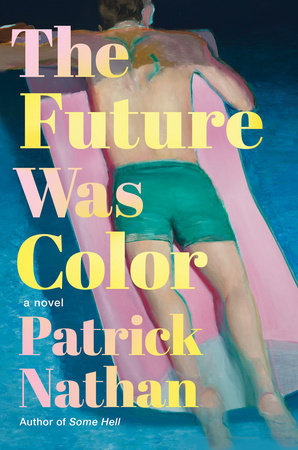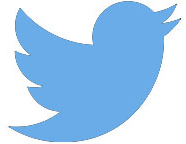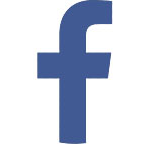
The Future Was Color
A Novel
Patrick Nathan
On Sale: 06/10/2025 | $16.95
9781640096998 | Paperback 5-1/2 x 8-1/4 | 224 pages Buy it Now
On Sale: 06/04/2024 | $26
9781640096240 | Hardcover 5-1/2 x 8-1/4 | 224 pages Buy it Now
Book Description
A dazzling novel about the inextricable link between the personal and the political set against the decadence of Hollywood and postwar Los Angeles
As a Hungarian immigrant working as a studio hack writing monster movies in 1950s Hollywood, George Curtis must navigate the McCarthy-era studio system filled with possible communists and spies, the life of closeted men along Sunset Boulevard, and the inability of the era to cleave love from persecution and guilt. But when Madeline, a famous actress, offers George a writing residency at her estate in Malibu to work on the political writing he cares most deeply about, his world is blown open. Soon Madeline is carrying George like an ornament into a class of postwar L.A. society ordinarily hidden from men like him.
What this lifestyle hides behind, aside from the monsters on the screen, are the monsters dwelling closer to home: this bacchanalia covers a gnawing hole shelled wide by the horror of the war they thought they’d left behind and the glimpse of an atomic future. It’s here that George understands he can never escape his past as György, the queer Jew who fled Budapest before the war and landed in New York, all alone, a decade prior.
Spanning from sun-drenched Los Angeles to the hidden corners of working-class New York to a virtuosic climax in the Las Vegas desert, The Future Was Color is an immaculately written exploration of postwar American decadence, reinventing the self through art, and the psychosis that lingers in a world that’s seen the bomb.
Praise For This Book
them, A Best LGBTQ+ Book of the YearLos Angeles Times, A Must Read Book of the Month
Esquire, A Best Book of the Summer
Named a Most Anticipated Book by Los Angeles Daily News, Literary Hub, LGBTQ Reads, The Rumpus, & The Millions
"A work of muscular poetic force, mysterious and arresting." —Charles Arrowsmith, The Washington Post
"The Future Was Color probes evergreen postwar themes like McCarthyism and the specter of nuclear holocaust . . . Nathan’s style channels a kind of rapturous Fitzgeraldian opulence, where loneliness is romantic, disenchantment beautiful and the world exists in sensuous splendor." —Sam Sacks, The Wall Street Journal
“A riveting novel that explores basic existential questions ranging from 'what is life’s purpose?' to 'how can there be light and happiness in dark times?' History was ruptured in the 1950s; how could life go on after the revelation of World War II death camps and the creation of a bomb that could incinerate a city’s population with a single blast? These questions make The Future Was Color timely in 2024 America.” —Lorraine Berry, Los Angeles Times
“Nathan employs the timeless ‘a stranger comes to town’ plot, as a gay Hungarian Jew named George Curtis gets invited to a chic Malibu house for a 1950s Hollywood heyday. However, George’s backstory in Manhattan and future in Paris bookend that bacchanalia and show how dark the shadow of McCarthyism and its ‘Lavender Scare’ loomed over queer society—as other paranoias of the day did over other people, reminding readers that things have not changed enough.” —Bethanne Patrick, Los Angeles Times
"Everything I look for in a book: a unique and startling voice, a queer protagonist and a deep understanding of a particular time and place." —Ilana Masad, NPR
"I'm getting choked up just thinking about the beauty and scope of this novel, all of which fit neatly into 209 pages . . . Nathan takes readers from Los Angeles (Hollywood) to New York to Las Vegas to Paris, all the while seamlessly incorporating significant historical events, as he tells the extraordinary story of protagonist George, a gay Hungarian immigrant." —Gregg Shapiro, Bay Area Reporter
"Lovers of literary fiction will still want to take summer’s long, hot days to luxuriate in the novel’s prose and its steamy eroticism, not to mention its thoughtful and challenging contemplations on art, politics and, well, the entire human condition." —Samantha Dunn, Southern California News Group
"Nathan’s L.A. noir novel spans decades and countries and delves into the power of art, self-reinvention, and the tether between the personal and the political." —Emily St. Martin, Los Angeles Daily News
"Your steamiest summer read arrives with The Future Was Color, a sexy historical novel set in McCarthy-era Hollywood and beyond . . . A moving portrait of queer lives that were otherwise silenced or interrupted by history." —Adrienne Westenfeld, Esquire
"A book that explores decadence, but in the most thoughtful way, a compulsive page-turner with layers of subtext . . . Nathan captures the essence of humanity and personal trauma in an addictively entertaining nutshell." —Erik Himmelsbach-Weinstein, Alta
"If you enjoyed the Showtime series Fellow Travelers and are looking for more queer stories that blend the personal with the political, The Future Was Color should fit the bill nicely." —Cindy White, The A.V. Club
"I have a little (read: enormous) style crush on Patrick Nathan’s latest novel, which wields language the way a Cirque du Soleil performer uses their body: insanely, beautifully, elastically." —Ilana Masad, A them Best LGBTQ+ Book of the Year
"An addictive novel that articulates what it means to feel lonely and 'other' while desperately looking for a happy and fulfilling life." —Tessa Flores, HuffPost
"Rich, scintillating . . . In lush and achingly precise prose, drenched in loneliness and longing, Nathan masterfully renders George’s struggle to reckon with the relationship between spectacle and violence, artifice and self-knowledge, remembrance and possibility." —Nathan Goldman, Jewish Currents
"A brilliant, wall-breaking flash forward to the future, plus a satisfying but not smutty amount of debauchery, make Nathan’s novel a perfect read." —Deborah Copperud, Racket
"Patrick Nathan’s second novel, The Future Was Color, makes facing and accepting our perpetual apocalypse feel sexy . . . Sentence by intricately dazzling sentence, Nathan renders 1950’s Los Angeles cinematically, following George as he navigates the cool, breezy, laconic tensions and anxieties that fracture and bind the small world of Hollywood in the McCarthy era . . . A novel about witnessing, again and again, our own destruction, and yet it magically allows us to face it each time and feel hope, to feel we must engage with the world we share even as it self-destructs." —Stephen Patrick Bell, Foglifter
"Even as he stacks the weight of past and future horrors before us, Nathan’s language rebukes the privilege of pearl-clutching despair by carving out gaps for intersubjectivity. His descriptions are so visceral that one can almost feel the flushed cheek rise from a line . . . Patrick Nathan counts among the dreamers—those guided by a compass whose true north is care and creation . . . Goosebumps appear on my arms when trying to describe how much I needed this novel that I could never have imagined." —Alina Stefanescu, Los Angeles Review of Books
"This complex, compassionate novel is an impressive achievement for a young author who has a promising career ahead of him." —Daniel A. Burr, The Gay & Lesbian Review
"If Fellow Travelers has you curious for more in-depth historical fiction on the McCarthy era and the lavender scare, look no further than Patrick Nathan’s new novel, set in 1950s Hollywood." —Tiernan Bertrand-Essington, Queerty
"Everything Patrick Nathan writes is a banger, whether it be a wrenching coming-of-age novel, a work of criticism excoriating our country’s authoritarian obsession with images, or even his incisive Substack. Expect no less from the author’s second novel, which follows a closeted screenwriter in McCarthy-era Hollywood and the big screen starlet who seems to offer a sort of salvation. A monster mash between Sunset Boulevard and The Amazing Adventures of Kavalier and Clay.” —Michelle Hart, Electric Literature
"Masterful . . . very sexy and insistently alive. This one’s an ode to the people and projects that light us up, in spite of all the darkness . . . Take this one to the beach house and snort it up with the sunset. You won’t regret it!" —Brittany Allen, Literary Hub
"Nathan writes with the eloquence of a nimble mind working at the height of his powers. Gripping from the first sentence . . . Profound, life-affirming, and splendidly seductive, The Future Was Color deserves to become a new lodestar in the ever-expanding constellation of gay literature." —Dave Wheeler, Shelf Awareness (starred review)
“Patrick Nathan’s The Future Was Color is a sexy, prescient novel about the lengths an artist must go to to protect their career. It’s rare for a novel to be so emotionally gripping and intellectually rigorous, but it comes as no surprise that Nathan pulls it off. The Future Was Color is a love story; it’s a thriller; it’s an essential novel about creating art during war. This book fucks.” —Isle McElroy, author of People Collide
“This brisk and delicious novel fearlessly tackles the vast subjects of the human impulse to make art and life in the atomic age. Heady stuff, so worth adding that The Future Was Color is among the sexiest books I’ve read. What more could any reader want?” —Rumaan Alam, author of Leave the World Behind


















